A Rare and Very Fine Elizabethan Silver Pomander
A Rare and Very Fine Elizabethan Silver Pomander of Globular Form the Outer Hinged Sections each Engraved with a Royal Portrait
The finial screws upwards to allow the sections to be lowered, each separate compartment with finely engraved decoration together with the hexagon central column the whole raised upon a circular foot with rope-work borders
Unmarked
England
Late 16th to Early 17th Century / Circa 1600
Size: 8cm high, 5cm dia. - 3¹⁄₈ ins high, 2 ins dia. / 4 oz. / 113 grams
The finial screws upwards to allow the sections to be lowered, each separate compartment with finely engraved decoration together with the hexagon central column the whole raised upon a circular foot with rope-work borders
Unmarked
England
Late 16th to Early 17th Century / Circa 1600
Size: 8cm high, 5cm dia. - 3¹⁄₈ ins high, 2 ins dia. / 4 oz. / 113 grams
A Rare and Very Fine Elizabethan Silver Pomander of Globular Form the Outer Hinged Sections each Engraved with a Royal Portrait
The finial screws upwards to allow the sections to be lowered, each separate compartment with finely engraved decoration together with the hexagon central column the whole raised upon a circular foot with rope-work borders
Unmarked
England
Late 16th to Early 17th Century / Circa 1600
Size: 8cm high, 5cm dia. - 3¹⁄₈ ins high, 2 ins dia. / 4 oz. / 113 grams
The finial screws upwards to allow the sections to be lowered, each separate compartment with finely engraved decoration together with the hexagon central column the whole raised upon a circular foot with rope-work borders
Unmarked
England
Late 16th to Early 17th Century / Circa 1600
Size: 8cm high, 5cm dia. - 3¹⁄₈ ins high, 2 ins dia. / 4 oz. / 113 grams
Pomanders were first mentioned in literature in the mid thirteenth century. They were used in the late Middle Ages through to the 17th century. A Pomander, from the French ‘pomme d’ambre’ apple of amber, is a ball made for perfumes, such as ambergris, musk, or civet. The pomander was worn or carried in a vase, also known by the same name, as a protection against infections in times of pestilence or merely as a useful article to modify unpleasant odours. The globular cases which contained the pomanders were hung from a neck-chain or belt, or attached to the girdle, and were usually perforated in a variety of openwork techniques, and made of gold or silver. Sometimes they contained several partitions, in each of which was placed a different perfume.
The term ‘pomander’ can refer to the scented material itself or to the container that contains such material. The container could be made of gold or silver and eventually evolved to be shaped like nuts, skulls, hearts, books and ships. Smaller versions were made to be attached by a chain to a finger ring and held in the hand. Even smaller versions served as cape buttons or rosary beads.
A recipe for making pomander was included in John Partridge’s ‘The Treasury of Commodious Conceits, and Hidden Secrets’ (London, 1586). ‘Receipt to make a pomander’ by Frederic Madden in Privy Purse expenses of the Princess Mary, daughter of King Henry VII, afterwards Queen Mary (1553 - 1558). ‘The ingredients were, first benjamin (‘benzoin, balsamic resin’) storax, calamite and labdanum, finely levigated, and dissolved in a little rose-water over the fire. The composition was then taken out, and powder of cinnamon, sweet sanders and cloves added to it, all of which were well mixed and rubbed together. After this, ambergris, musk, and civit, of each three grains, were prepared, the first being dissolved and mingled with the other two… take your pome and by degrees to gather up the last three ingredients, kneading and mixing them well with the ball, till they become perfectly incorporated with it’.
The term ‘pomander’ can refer to the scented material itself or to the container that contains such material. The container could be made of gold or silver and eventually evolved to be shaped like nuts, skulls, hearts, books and ships. Smaller versions were made to be attached by a chain to a finger ring and held in the hand. Even smaller versions served as cape buttons or rosary beads.
A recipe for making pomander was included in John Partridge’s ‘The Treasury of Commodious Conceits, and Hidden Secrets’ (London, 1586). ‘Receipt to make a pomander’ by Frederic Madden in Privy Purse expenses of the Princess Mary, daughter of King Henry VII, afterwards Queen Mary (1553 - 1558). ‘The ingredients were, first benjamin (‘benzoin, balsamic resin’) storax, calamite and labdanum, finely levigated, and dissolved in a little rose-water over the fire. The composition was then taken out, and powder of cinnamon, sweet sanders and cloves added to it, all of which were well mixed and rubbed together. After this, ambergris, musk, and civit, of each three grains, were prepared, the first being dissolved and mingled with the other two… take your pome and by degrees to gather up the last three ingredients, kneading and mixing them well with the ball, till they become perfectly incorporated with it’.
Ex Private collection
Ex Gerald Satin Limited London, 3rd April 1981
Ex Gerald Satin Limited London, 3rd April 1981
A Rare and Very Fine Elizabethan Silver Pomander
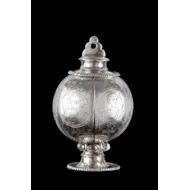
SOLD
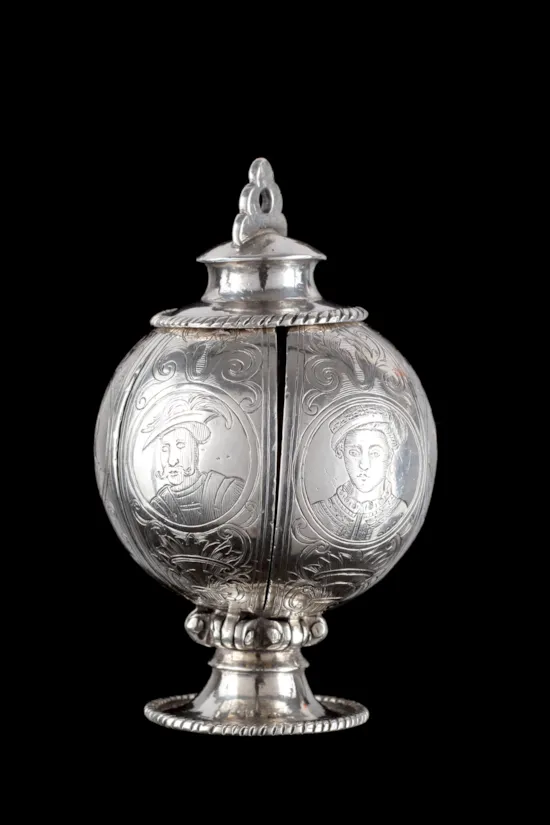
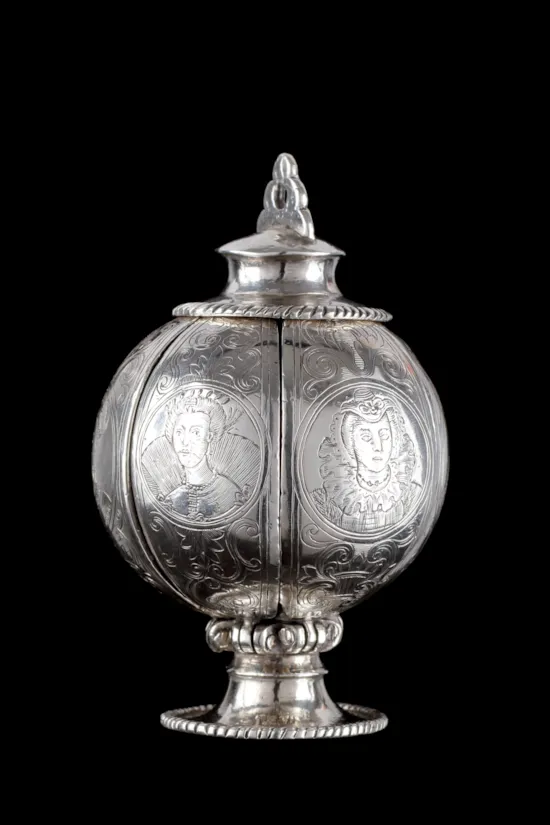
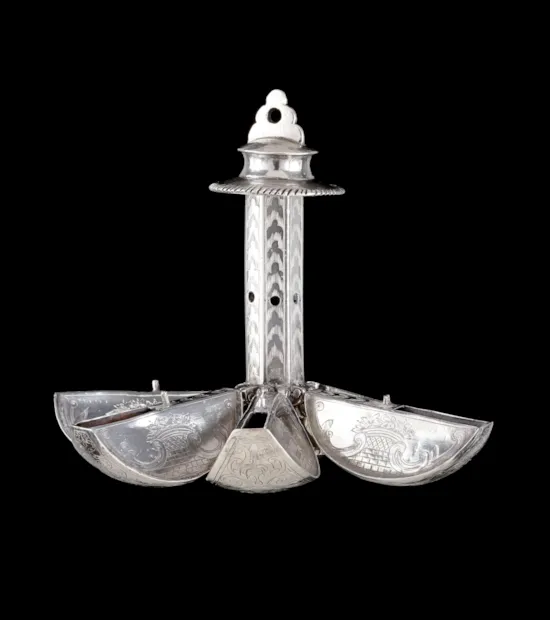
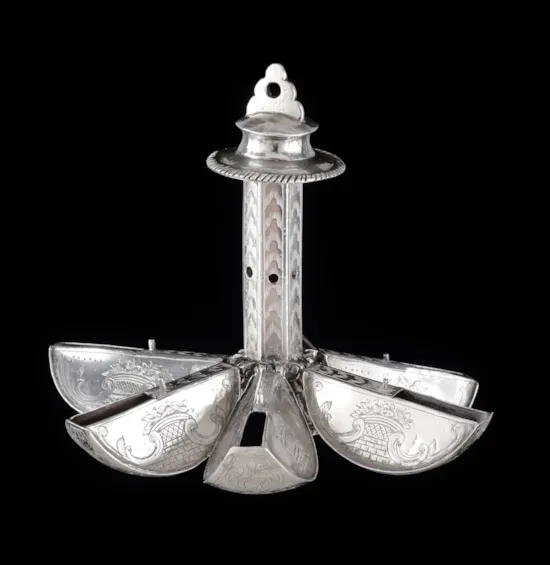
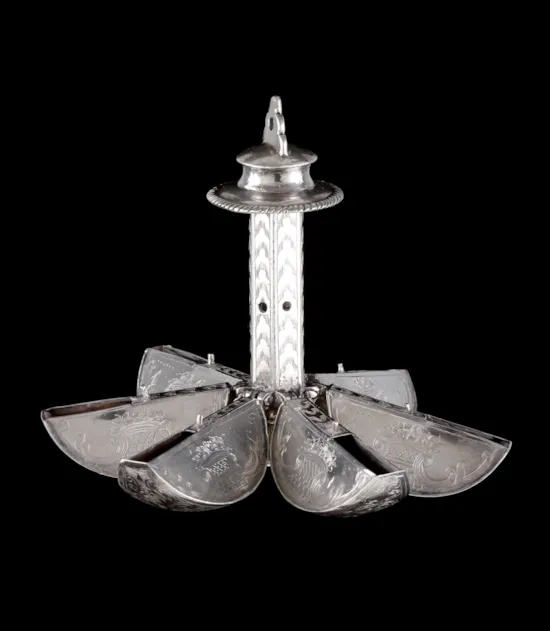
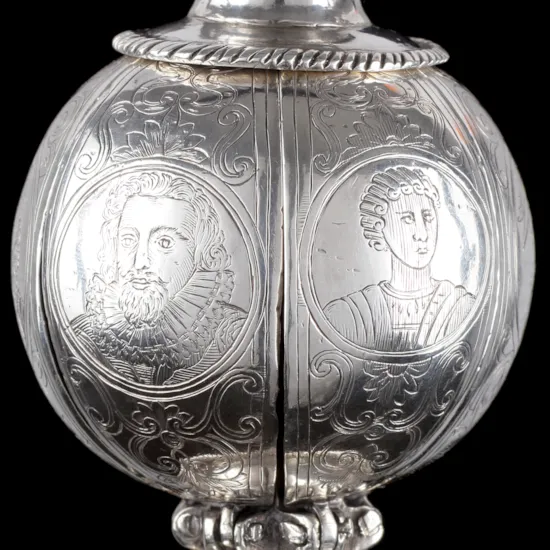
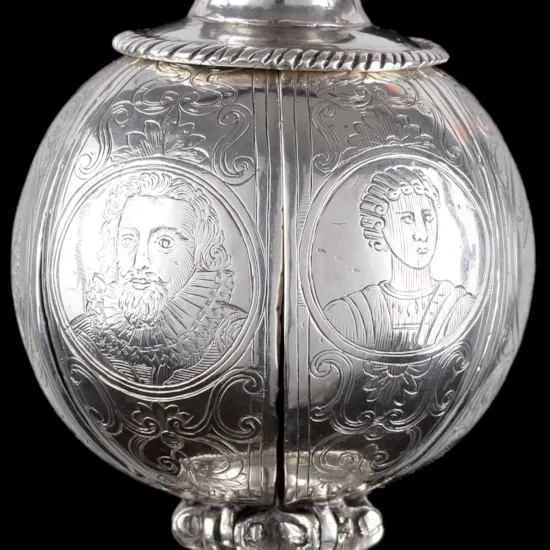
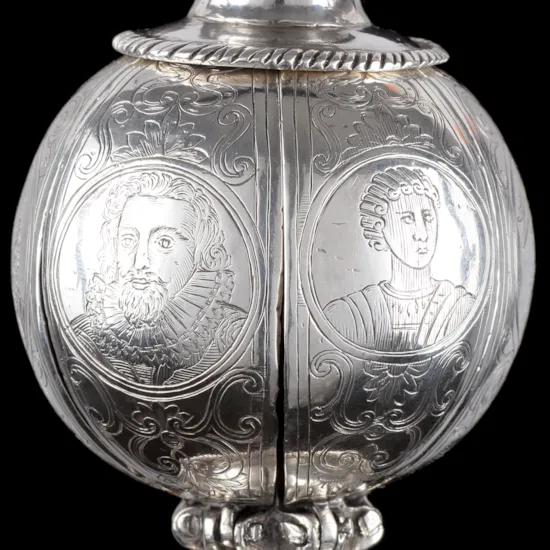

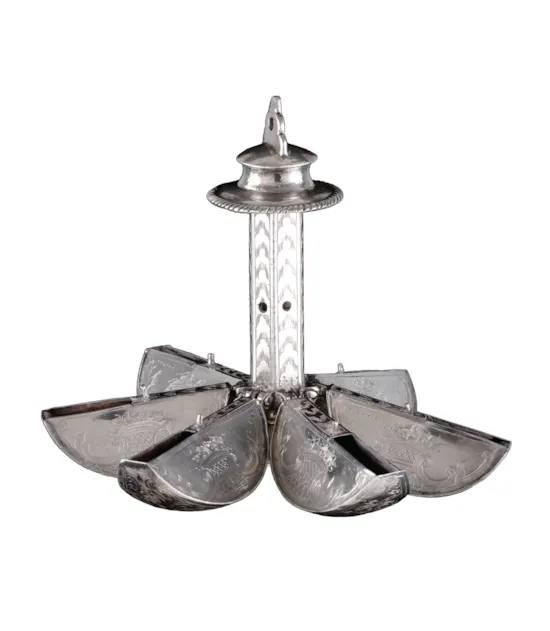










YOU MAY ALSO LIKE

